Arts & Culture
Nostalgia: Moving Forward from Yolanda
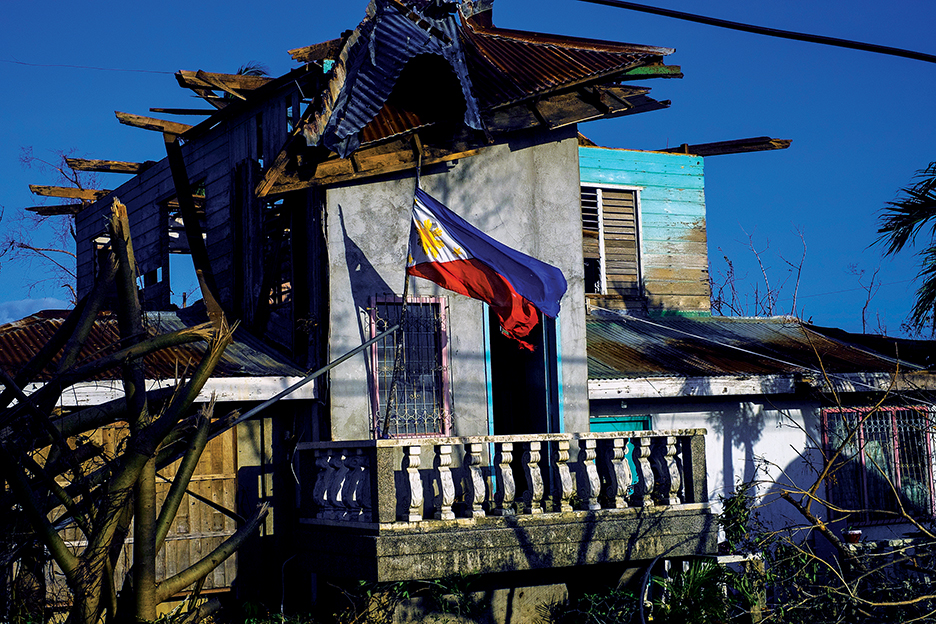
When the monster typhoon Haiyan, locally known as Yolanda, hit Central Philippines, it left in its wake unimaginable destruction of property and human life—as well as an admirable outpouring of generosity and solidarity from all walks of life that proves that, through the devastation, the human spirit is battered but not broken.
At 6:30am, Wednesday, 12 November 2013. It is a typical beautiful warm sunny day in the Philippines. The light is spectacular and the skies are a brilliant blue with wisps of clouds across its expanse. There is a cool, refreshing breeze. It seems like another perfect day, but it isn’t. Less that 60km north of where I sit at my desk at home is devastation. On Friday, 8 November, with winds of over 335kph, Typhoon Haiyan, known locally as Typhoon Yolanda left a wide swath of destruction across the Central Philippines including Northern Cebu. In too many areas, towns and cities were ravaged and 80% of all homes were destroyed. People are desperate. They’ve lost their homes, their families, their friends and their livelihoods. Where were you on Friday, 8 December 2013?
7:10am, 8 November 2013. Metro Cebu is quiet. I was up early. I tried to stay in bed to get as much rest as possible before the storm but couldn’t. I was restless. In three hours or so, “Yolanda” was supposed to be at its closest to the City. At home everything was battened down and protected to the best of our abilities. We hopefully had enough water, batteries and food to weather any storm. A couple of days before at the supermarkets, it was funny to see shopping carts laden with water, canned goods, batteries and then funnily, piled with chips, cookies and junk food. People were obviously hunkering down for the long haul. But junk food? I had to ask myself if these guys knew something I didn’t.
By 10:00am, the wind began to blow and the familiar feeling of unease began to set in. Cebu had just been through a terrible earthquake that left Bohol seriously damaged and everyone collectively anxious after thousands of aftershocks. A few short weeks later we sat waiting for another monster to hit Cebu: “Yolanda”, the strongest typhoon in human history. I tried to convince myself that there was no point worrying. According to the latest weather reports, Metro Cebu was going to be spared and we were protected, and our larders were stocked.
Little did we in the City know that, as we sat nervous but dry, vast areas of our country where the monster typhoon had passed and was passing, the relentless wind literally screamed like a horde of banshees, forming the rain into unending, painful horizontal sheets of needle-like spikes. It was effortlessly destroying homes and buildings, toppling trees, and sending debris flying and careening dangerously. Little did we know that a storm surge five to seven meters high was wreaking havoc and misery across wide areas of the Central Philippines killing thousands of people and destroying even more homes and peoples lives. On the morning of 8 November we were naturally worried about ourselves, but completely clueless to the epic human tragedy that was quickly unfolding.
Today, it is still unimaginable and near impossible to understand what it was like to live through the worst day of fear in the lives of millions, and millions of Filipinos. Till today, it is still very difficult to imagine and comprehend the tragedy that followed in the desperate hours and days immediately after super-typhoon “Yolanda”. And unless it has happened to you, it is still impossible to appreciate what it is to be a homeless refugee sleeping on the streets, sitting in the sun, bereft of family, food and water, surrounded by the ruins of your home.
My heart breaks every time I see the news. The tales of suffering are endless.
5:12pm, Saturday, 16 November 2013. I received a text from my friend, economist and professor, Perry Fajardo. It read, “I am very disturbed these days by these people that have done nothing but criticize the relief operation. It hurts the thousands who are sacrificing everything to help.”
Perry’s sentiment is correct. There is a fine line between expressing frustration, as many of us did, and unending criticism for political opportunism. While there is a yawning chasm between sincerity and the ‘pretension of assistance for political gain,’ the time for action is now. “Eastern Samar is gone” read a recent headline of The Philippine Star, underlining the urgent need to coalesce, to link our arms in support of millions of Filipinos instead of indulging in shallow political games.
11:06pm, 16 November 2013. From a Facebook friend Ronna Mae O’Connell: “Hi Dondi, I was informed that Bantayan Island needs relief badly. Please ask info from Alex Badayos and Felipe Tariman.”
I am sure everyone is getting calls, messages and texts like these constantly. The need is great. My first reaction was to jump and start hollering for help but after a moment of reflection, I decided to try to find out who was organizing to help Bantayan – to see if they were already in action. They were. Bantayan Island was wrecked and is one of dozens in dire need of assistance. All across Visayas, South Luzon and Northern Palawan are islands, islets, villages and settlements that need urgent assistance. Even the one-time leper colony of Culion is in dire need of relief and medical care. We all need to keep this kind of information flowing so we can help make sure no one gets left behind.
While I have never in my life seen this sheer scale of suffering in the Philippines, I have also never seen this sheer scale of profound outpouring of generosity, and the willingness and determination to help in whatever way possible. I shouldn’t be surprised. It is the heart of the Filipino and in the hearts of the friends of Filipinos.
Today, on social media and on the local and foreign news, there are expressions and stories of personal initiatives of concern and care even as inspiring tales of individual and civic heroism are emerging. All over Cebu, all over the Philippines, pockets of friends, employees, foreign residents, neighbors, classmates, government and social workers, businessmen, and even tourists are working hand in hand to help in whichever way they can. Foreign-based Filipinos are organizing, and ordinary people in many countries are donating what they can to help, even those with little or no particular affinity for the Philippines. In most cases, these generous souls weren’t asked to help. They just asked how they could help – and they did and they are helping – just as so many Filipinos are helping, even at the sacrifice of their finances, family, school and work time, and even their businesses.
Make no mistake. It may take only weeks or months to rebuild homes, but it will take years to replace lost livelihoods and to heal hearts torn apart by loss. Our relief work will not end in a few weeks, or even in a few months. We will have to stay focused and continue helping our brothers and sisters rebuild their lives, even as the sense of urgency wanes, and even when the next hot news story hits the headlines. We must never forget Yolanda – not only for the sake of those who suffered, but for the sake of those who survived and still live in the peril of more catastrophes – as we all do.
Nor can we neglect the Boholanos who are still rebuilding their lives after the terrible earthquake. They still need you.
Yolanda has left her profound footprint on the Philippines. In all likelihood she will not be the last super-storm to bludgeon its way through our country. I shudder to think of what will happen if another angry typhoon follows on heels of Yolanda. In today’s world of mutated weather, as certain as an angry woman’s slap, another Yolanda, Ruping, Dading, Ondoy or Pepang will come. We can no longer be ill-prepared and we only have to look at how many other countries prepare for and respond to disasters: the USA, Fukushima in Japan, and even in India in 2012, where 800,000 people were forcibly evacuated following a major typhoon warning. The storm hit and only a handful of lives were lost. Seventeen years earlier a similar typhoon hit the same area of India and 10,000 people died. They learned. They prepared. They lived.
Time is short, and the waters may rise again.
Professor Perry, I have been guilty of being critical, constructively I hope, because like many others I can’t help but think, in the clarity of hindsight, that more could have been done before the typhoon, when the red light warnings were flashing, and immediately after when it became crystal clear that Yolanda wreaked immeasurable havoc. We can and should do the post-mortems later – after this growing human catastrophe is averted. And hopefully, just hopefully, this painful lesson will help our country leapfrog from spastic adolescence to deeper political and social maturity as we put aside petty political differences in the interest of the common good of all Filipinos – once and for all. This was a humanly expensive and painful lesson that must never, ever happen again.
If anyone would like to assist, there are three ways to help: the first is to volunteer time. There are many companies, organizations, and private initiatives that collect, organize and distribute relief goods. If you live abroad, come to Cebu in the Philippines and help in these relief operations. Or send your kids. We will look after them. It will be a great human experience and we can point people in the right direction and put them in contact with the right organizations, formal or informal. The second is to donate funds. The expenses are enormous. The third is to hope and keep the Philippines and those who were affected close to your hearts, in your thoughts and if you pray, in your prayers.
The Filipino is a wonderful resilient person and I have no doubt that even now as I sit at my desk, in the face of immense hardship and suffering, the Filipinos affected by this disaster will once again begin to smile and hope – and sing – as they always do. Bangon Pilipinas!
Arts & Culture
Visayas Art Fair Year 5: Infinite Perspectives, Unbound Creativity
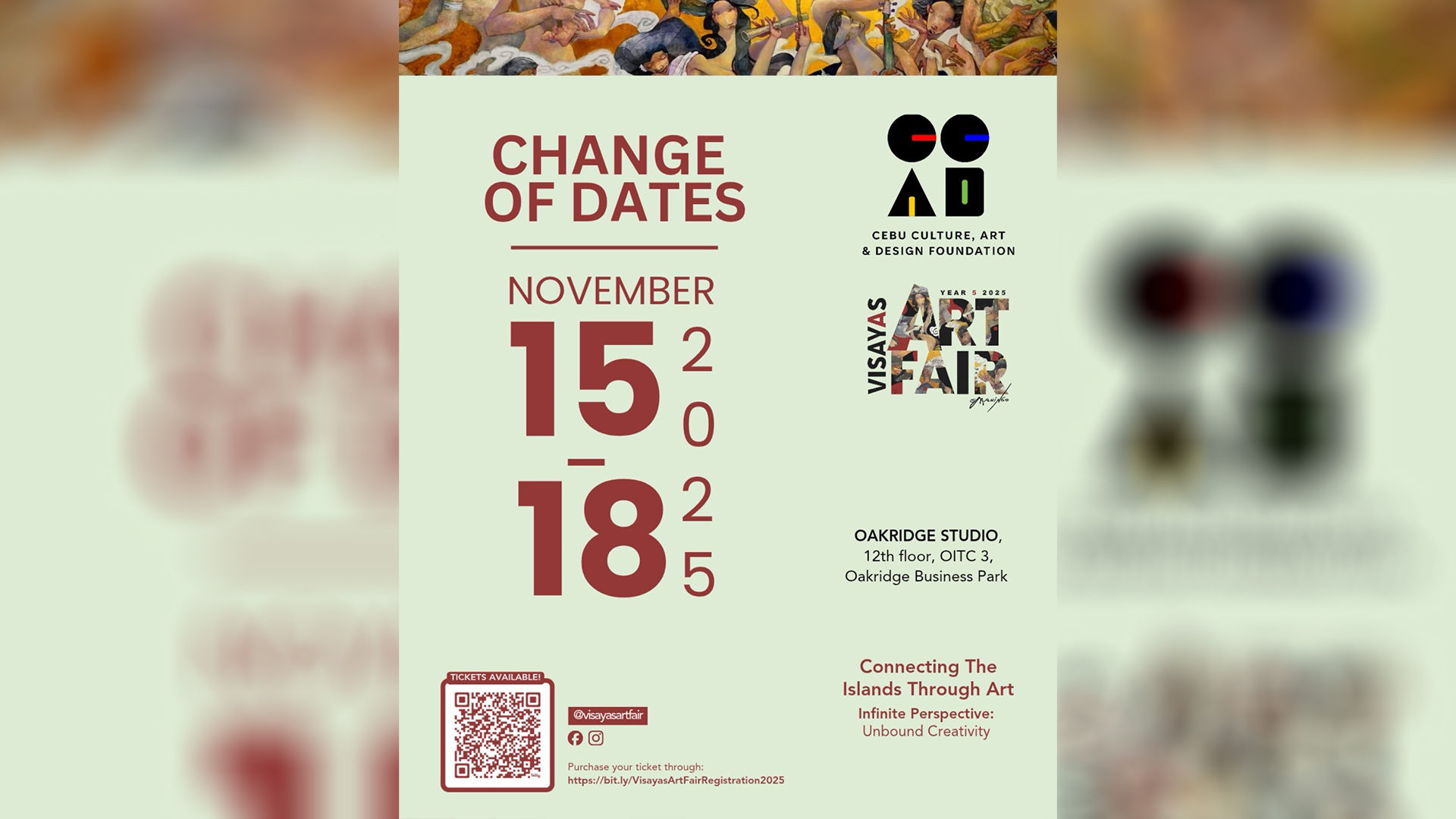
by Jing Ramos
This year’s Visayas Art Fair marks its 5th anniversary, celebrating the theme “Infinite Perspectives: Unbound Creativity.” The fair continues its mission of bridging creativity, culture, and community in the country. This milestone edition strengthens its partnership with the National Commission for Culture and the Arts and expands collaborations with regional art organizations and collectives—reinforcing its role as a unifying platform for Philippine art.
VAF5 features the works of Gil Francis Maningo, honoring the mastery of his gold leaf technique on opulent portraits of the Visayan muse Carmela, reflecting spiritual awareness.

Gil Francis Maningo is celebrated for his gold leaf technique.
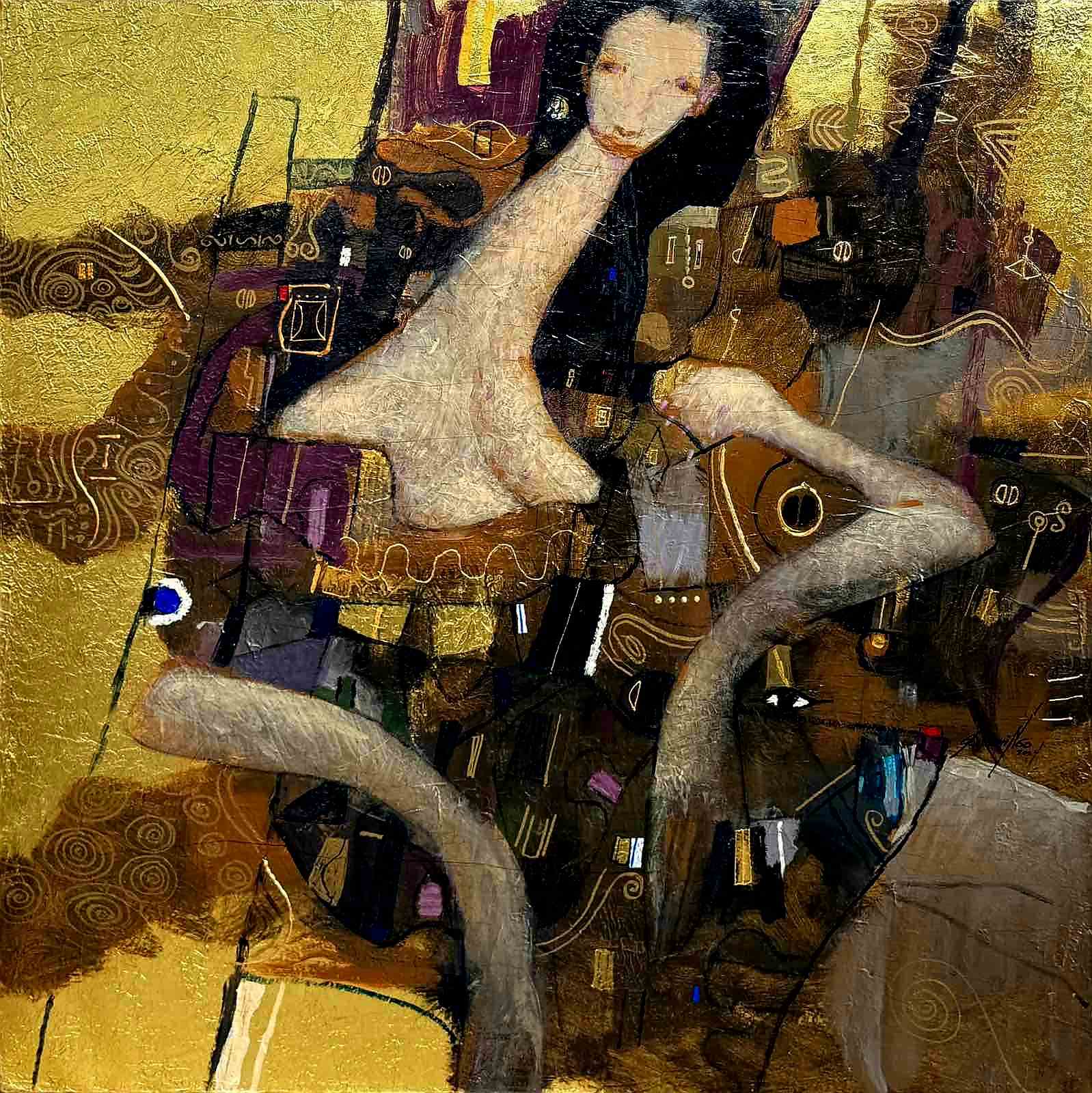
Gil Francis Maningo’s recurring theme of his Visayan muse “Carmela”.
Another featured artist is Danny Rayos del Sol, whose religious iconography of Marian-inspired portraits offers a profound meditation on the sacred and the sublime. This collaboration between two visual artists sparks a dialogue on the Visayan spirit of creativity and resilience. Titled “Pasinaya,” this dual showcase explores gold leaf as a medium of light and transcendence.
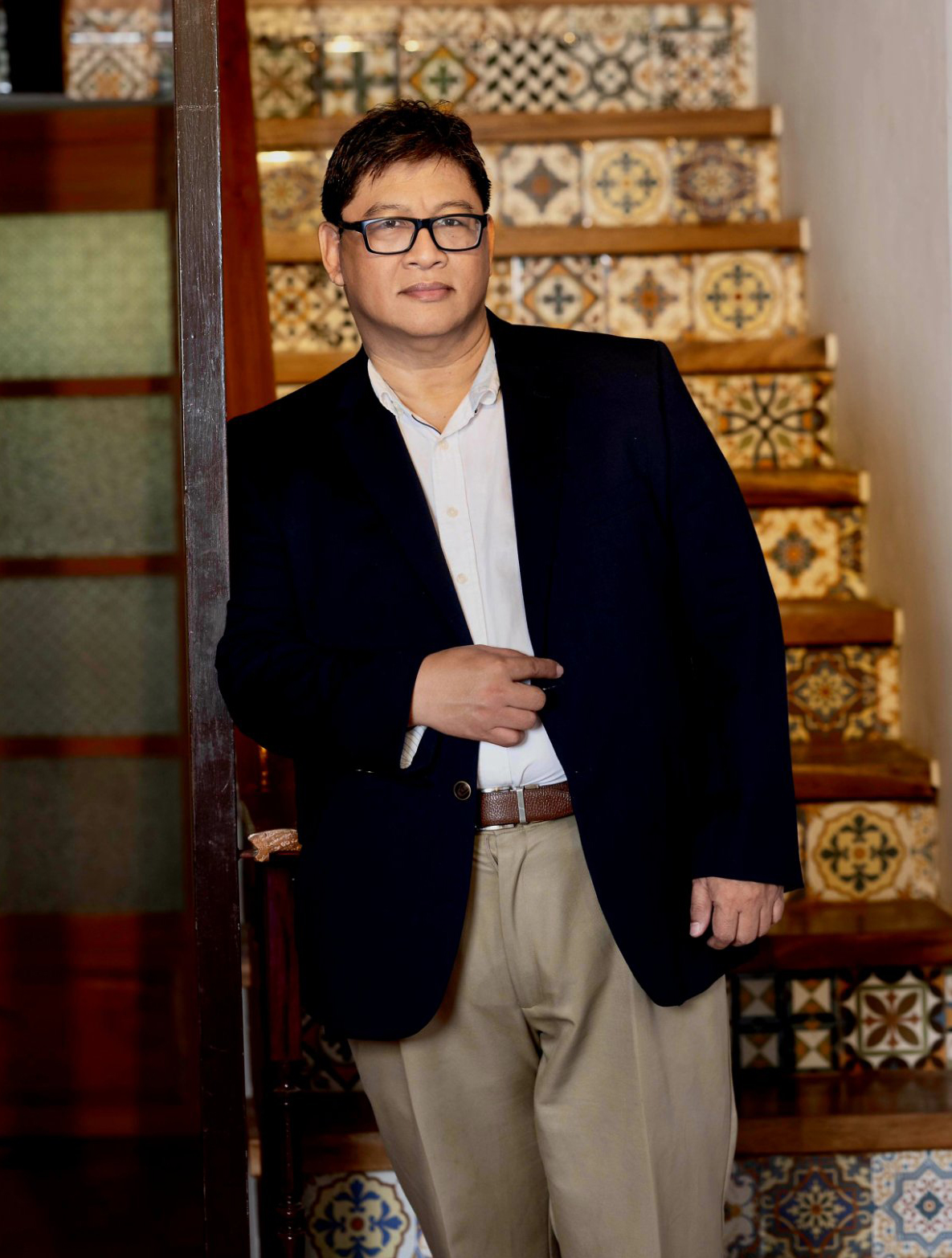
Artist Danny Reyes del Sol

Danny Reyes del Sol’s religious iconography.
Now in its fifth year, the Visayas Art Fair has influenced a community of artists, gallerists, brokers, collectors, museum curators, and art critics—constructing a narrative that shapes how we approach and understand the artist and his work. This combination of factors, destined for popular consumption, illustrates the ways in which art and current culture have found common ground in a milieu enriched by the promise of increased revenue and the growing value of artworks.
Laurie Boquiren, Chairman of the Visayas Art Fair, elaborates on the theme, expressing a vision that celebrates the boundless imagination of unique artistic voices:
“Infinite Perspectives speaks of the countless ways artists see, interpret, and transform the world around them—reminding us that creativity knows no single point of view. Unbound Creativity embodies freedom from convention and controlled expression, allowing every artist to explore and experiment without borders.”
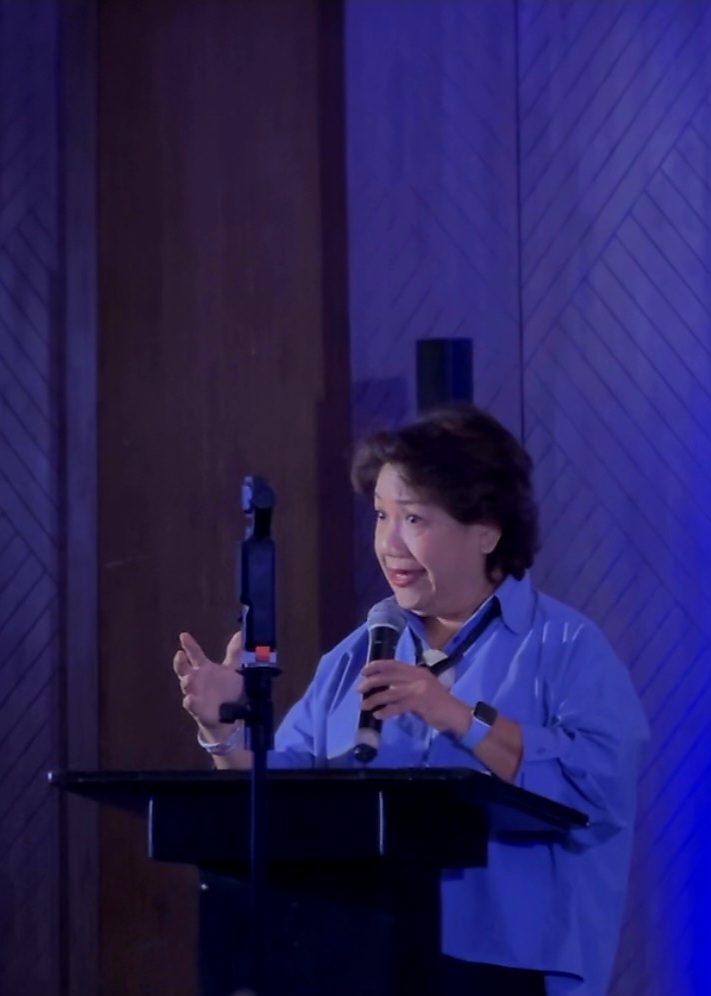
Laurie Boquiren, Chairman of the Visayas Art Fair has tirelessly championed the creative arts for the past five years.
Arts & Culture
Kultura. Kapital. Kasalukuyan: Art that Speaks of Today

by Jose Carlos G. Campos, Board of Trustees National Museum of the Philippines
The National Museum of the Philippines (NMP) and the Bangko Sentral ng Pilipinas (BSP) recently teamed up to prove that money isn’t just for counting—it’s also for curating! Their latest joint exhibition, Kultura. Kapital. Kasalukuyan: Contemporary Art from the Bangko Sentral ng Pilipinas Collection, is now open, and it’s a real treat for art lovers and culture buffs alike.
On display are gems from the BSP’s contemporary art collection, including masterpieces by National Artist Benedicto Cabrera (Bencab), along with works by Onib Olmedo, Brenda Fajardo, Antipas Delotavo, Edgar Talusan Fernandez, and many more. Some of the artists even showed up in person—Charlie Co, Junyee, Imelda Cajipe-Endaya, Demi Padua, Joey Cobcobo, Leonard Aguinaldo, Gerardo Tan, Melvin Culaba—while others sent their family representatives, like Mayumi Habulan and Jeudi Garibay. Talk about art running in the family!
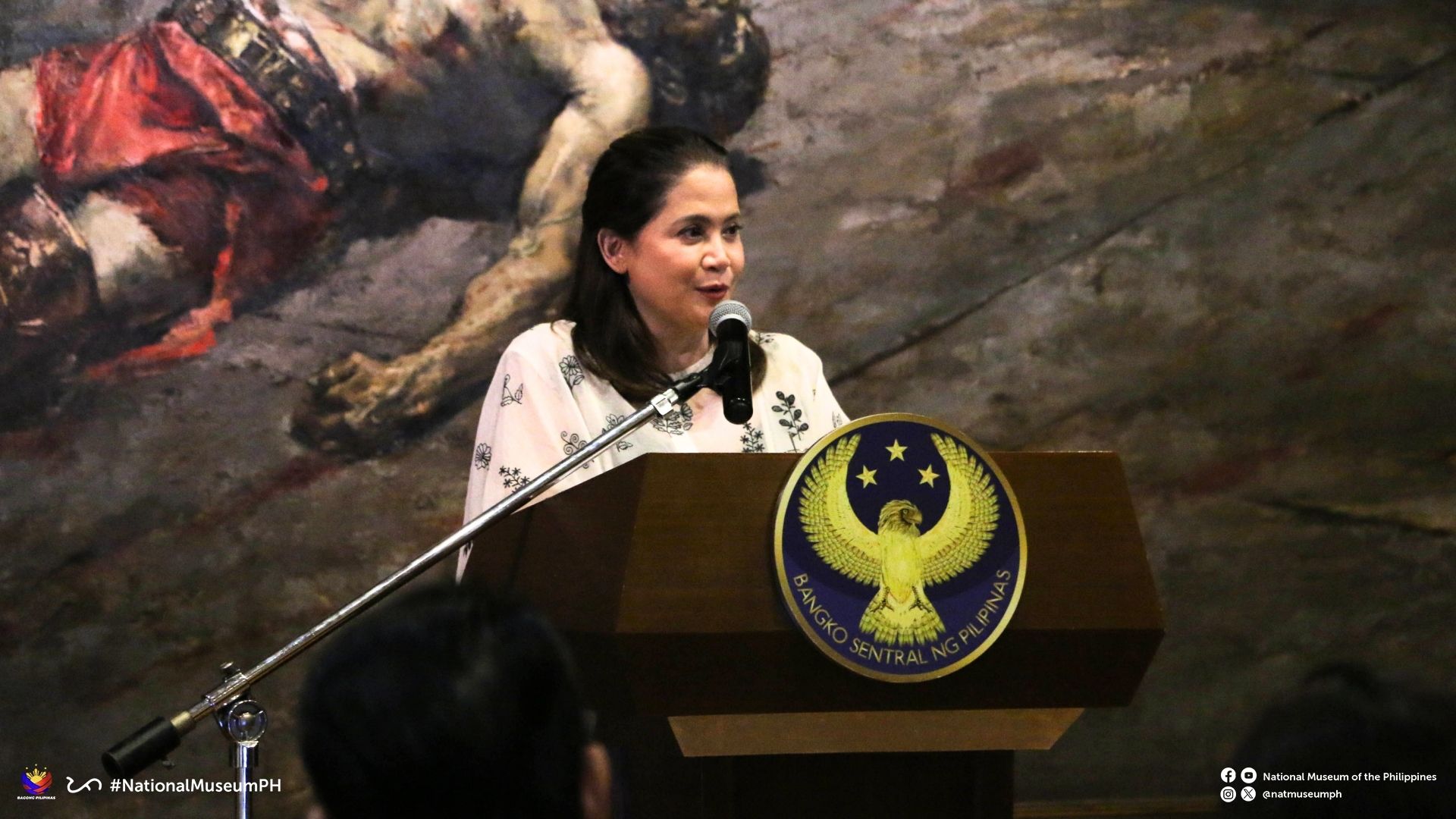
Deputy Governor General of the BSP, Berna Romulo Puyat
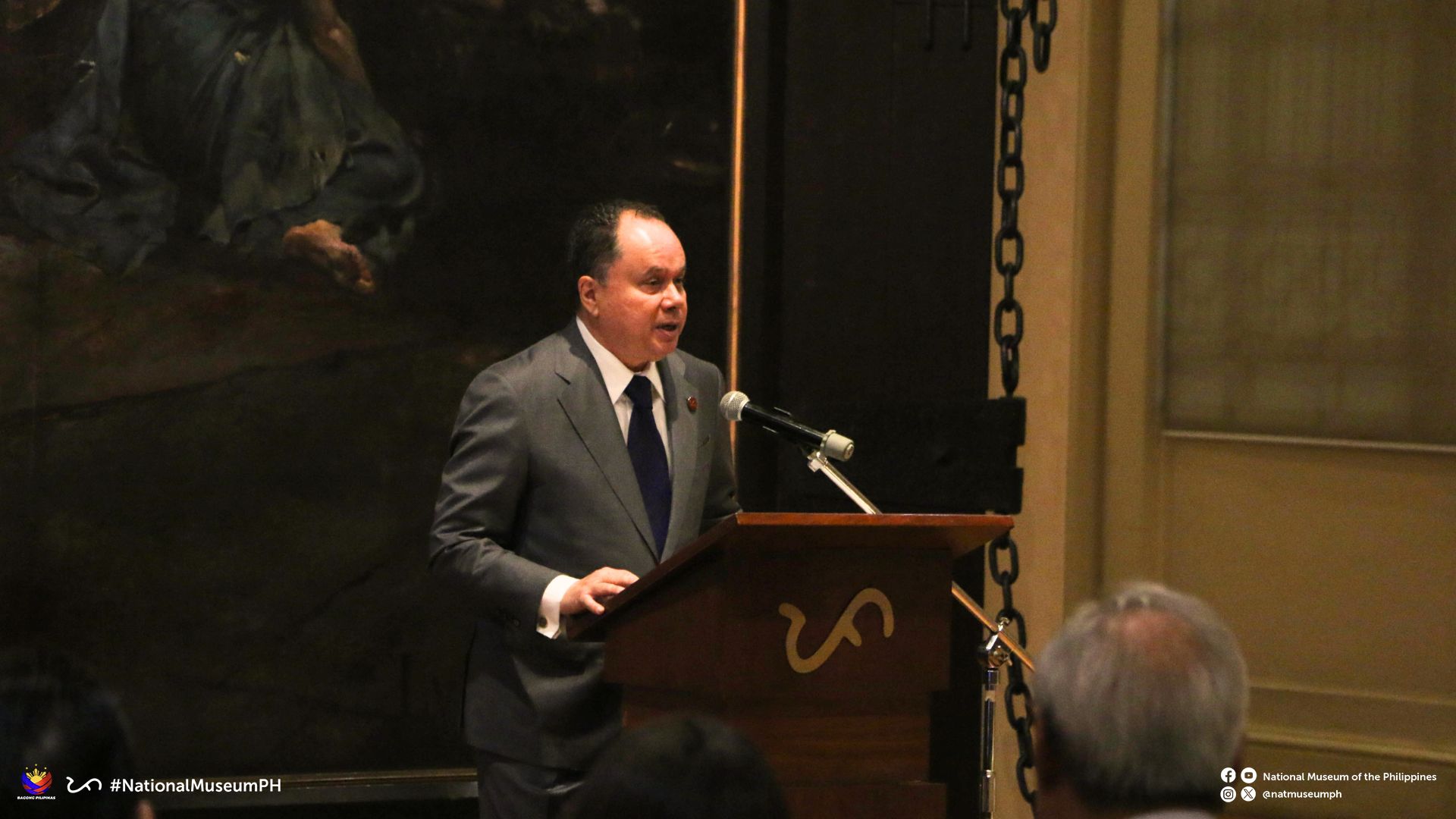
Chairman of NMP, Andoni Aboitiz
The BSP Governor Eli M. Remolona, Jr. and members of the Monetary Board joined the event, alongside former BSP Governor Amando M. Tetangco, Jr., Ms. Tess Espenilla (wife of the late Nestor A. Espenilla, Jr.), and the ever-graceful former Central Bank Governor Jaime C. Laya, who gave a short but enlightening talk about the BSP art collection.
From the NMP, Chairman Andoni Aboitiz, Director-General Jeremy Barns, and fellow trustees NCCA Chairman Victorino Mapa Manalo, Carlo Ebeo, and Jose Carlos Garcia-Campos also graced the occasion. Chairman Aboitiz expressed gratitude to the BSP for renewing its partnership, calling the exhibition a shining example of how financial institutions can also enrich our cultural wealth.
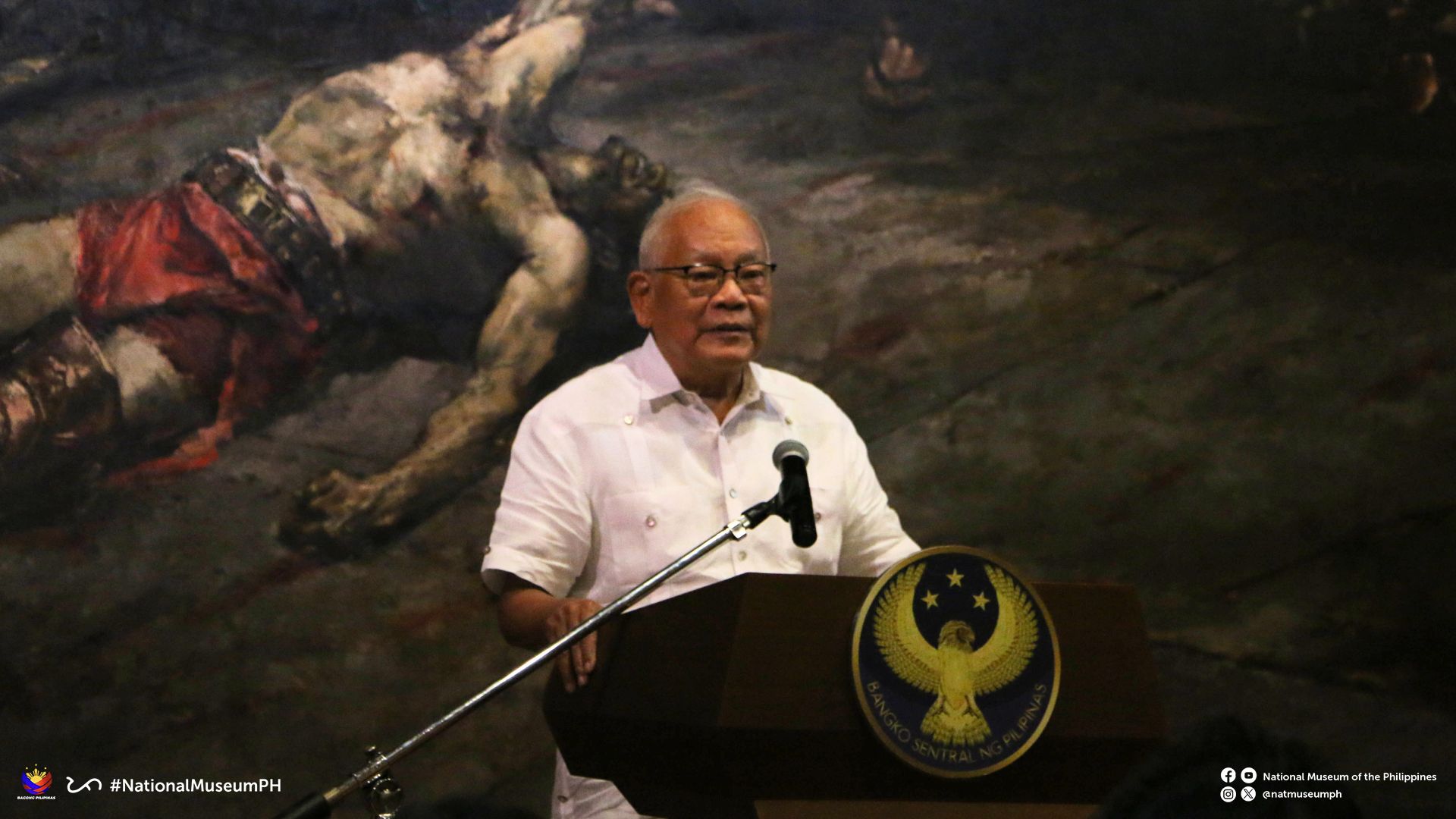
Former Governor of BSP Jaime Laya
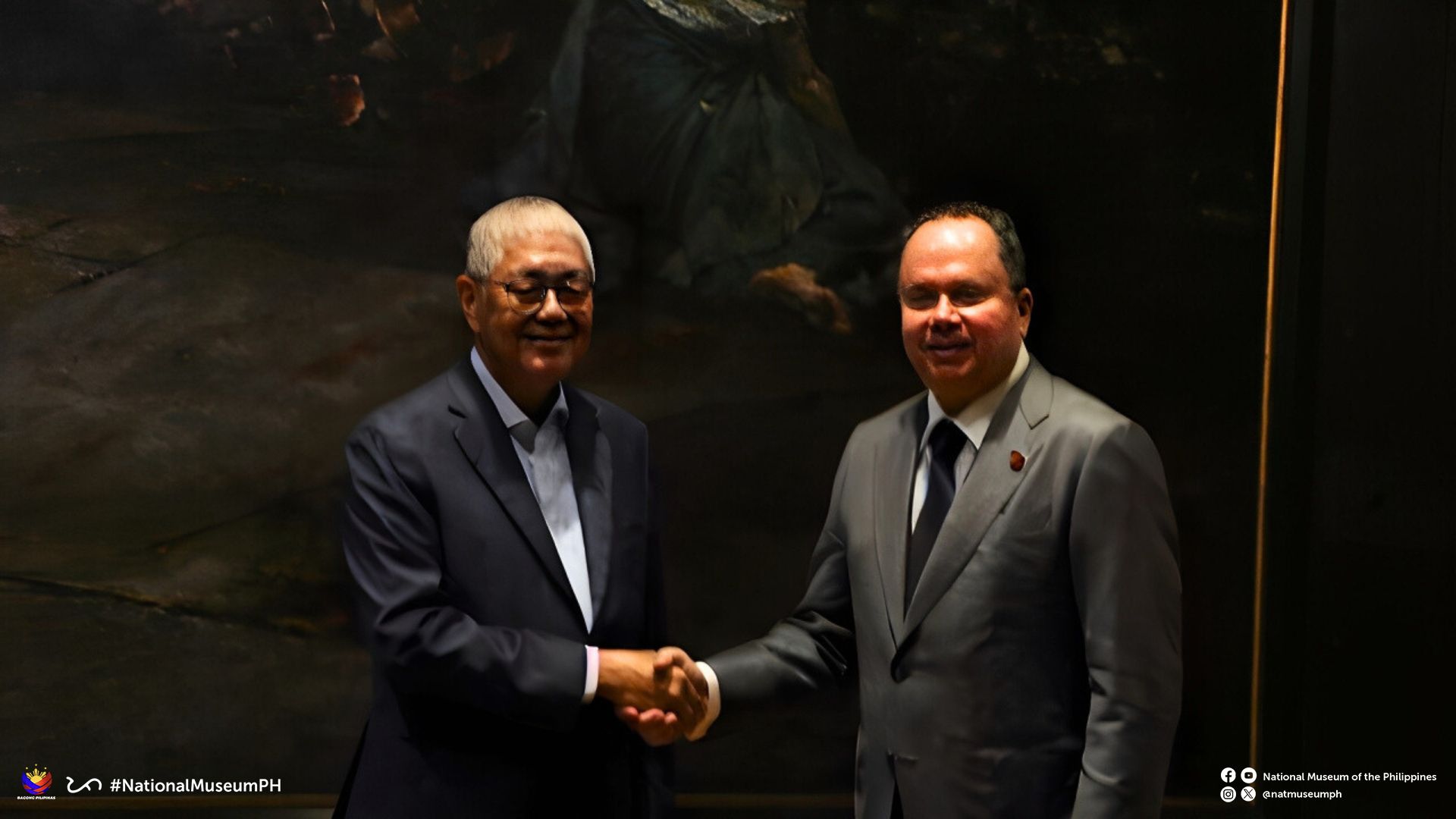
Governor of BSP Eli M. Remona and Chairman of NMP Board Andoni Aboitiz
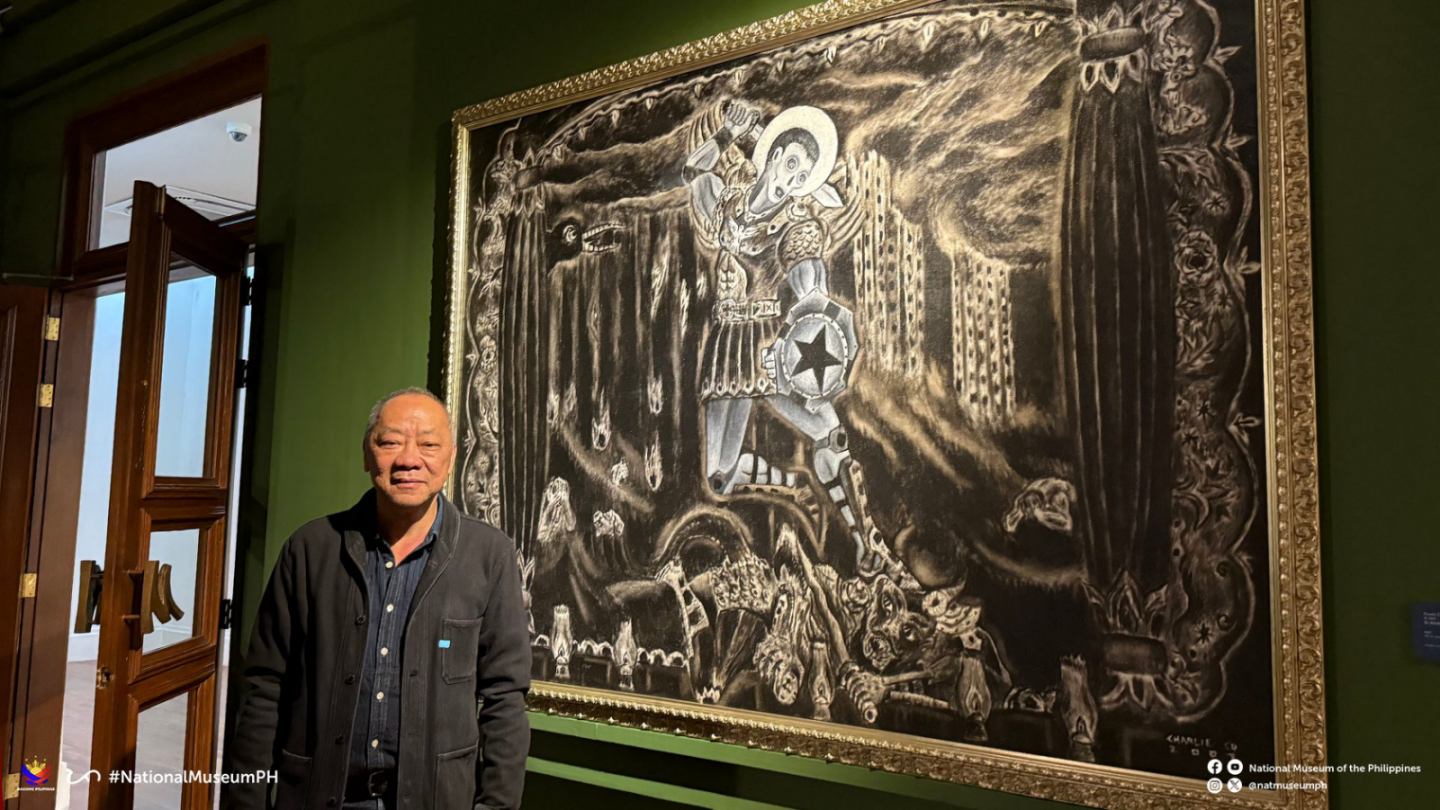
Artist Charlie Co
Before the official launch, a special media preview was held on 5 August, hosted by BSP Deputy Governor Bernadette Romulo-Puyat and DG Jeremy Barns. It gave lucky guests a sneak peek at the collection—because sometimes, even art likes to play “hard to get.”
The exhibition Kultura. Kapital. Kasalukuyan will run until November 2027 at Galleries XVIII and XIX, 3/F, National Museum of Fine Arts. Doors are open daily, 9:00 AM to 6:00 PM. So if you’re looking for something enriching that won’t hurt your wallet (admission is free!), this is your sign to visit. After all, the best kind of interest is cultural interest.
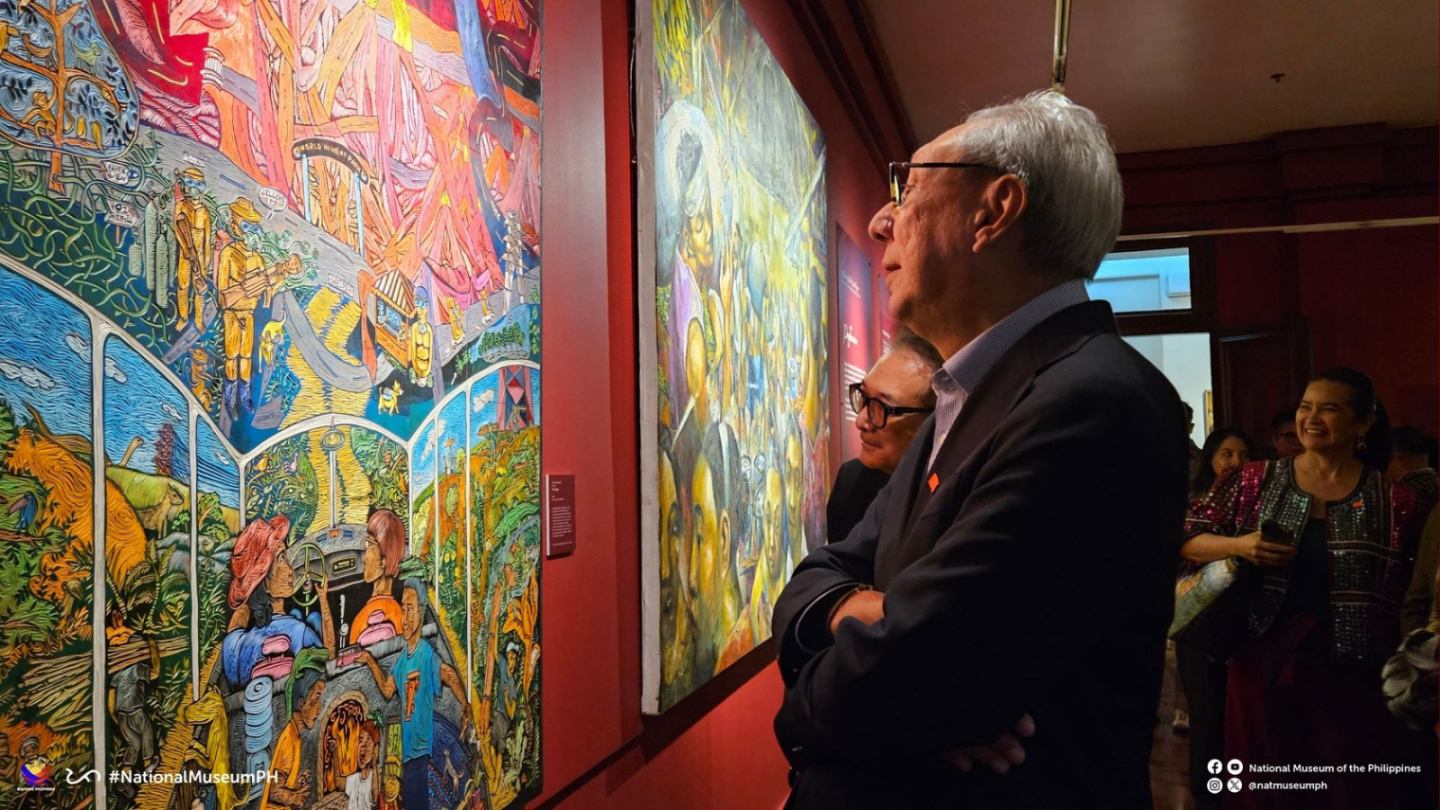
Monetary Board of the BSP, Walter C. Wassmer
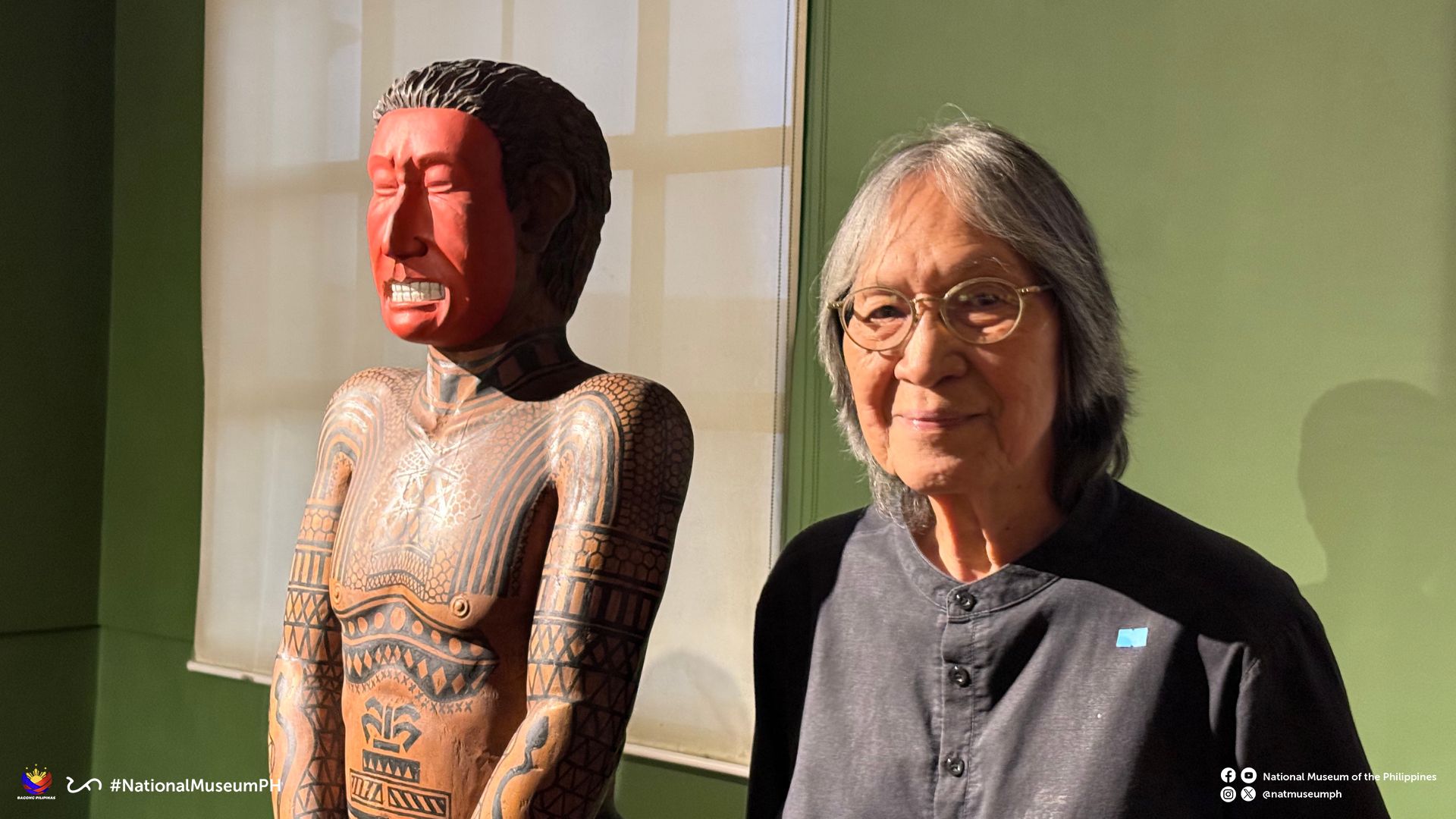
Luis Yee, Jr. aka ‘Junyee’ The Artist beside his Sculpture
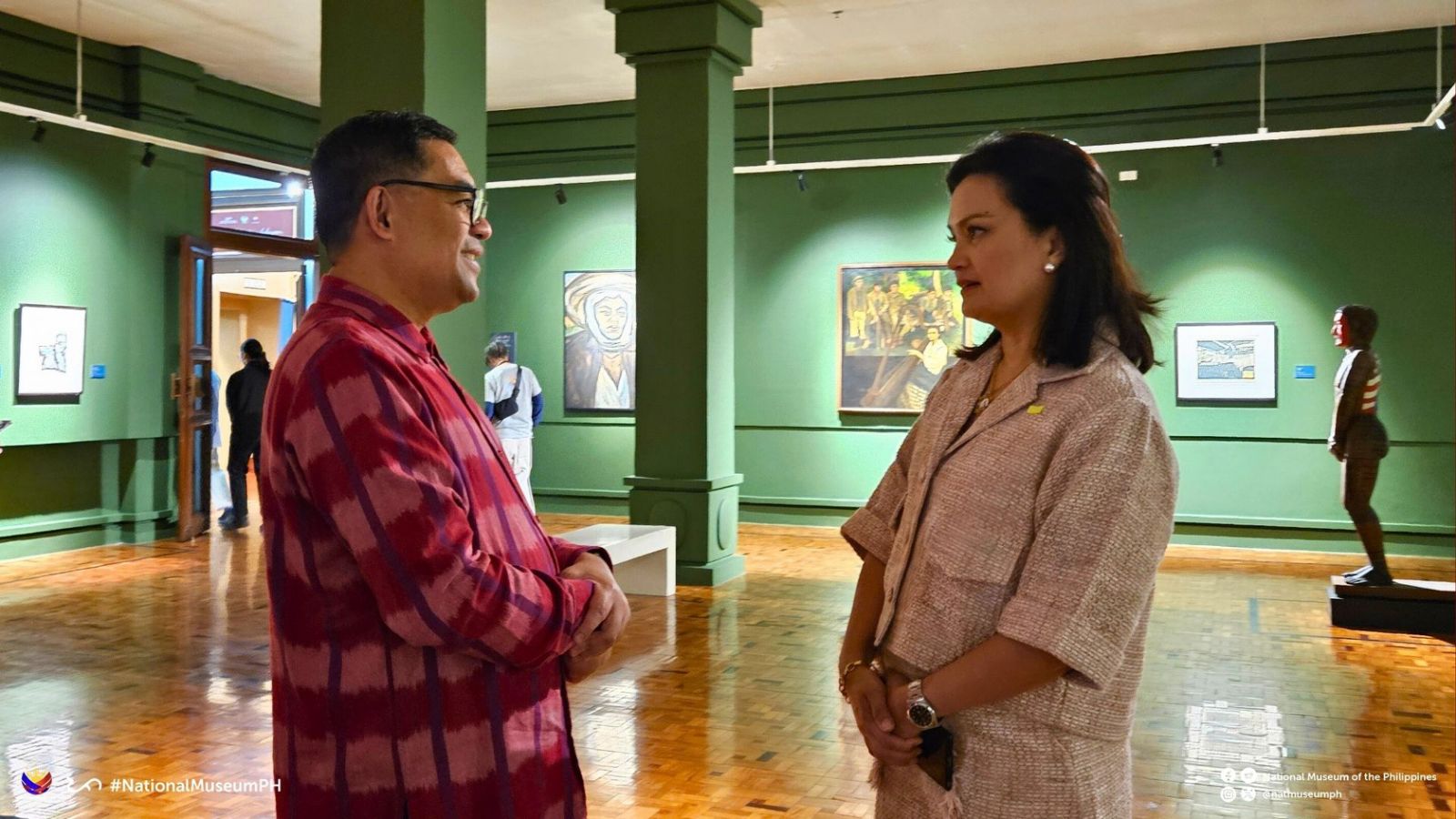
Arvin Manuel Villalon, Acting Deputy Director General for Museums, NMP with Ms. Daphne Osena Paez
Arts & Culture
Asia’s Fashion Czar I Knew as Tito Pitoy; Remembrance of a Friendship Beyond Fashion with Designer Jose R. Moreno
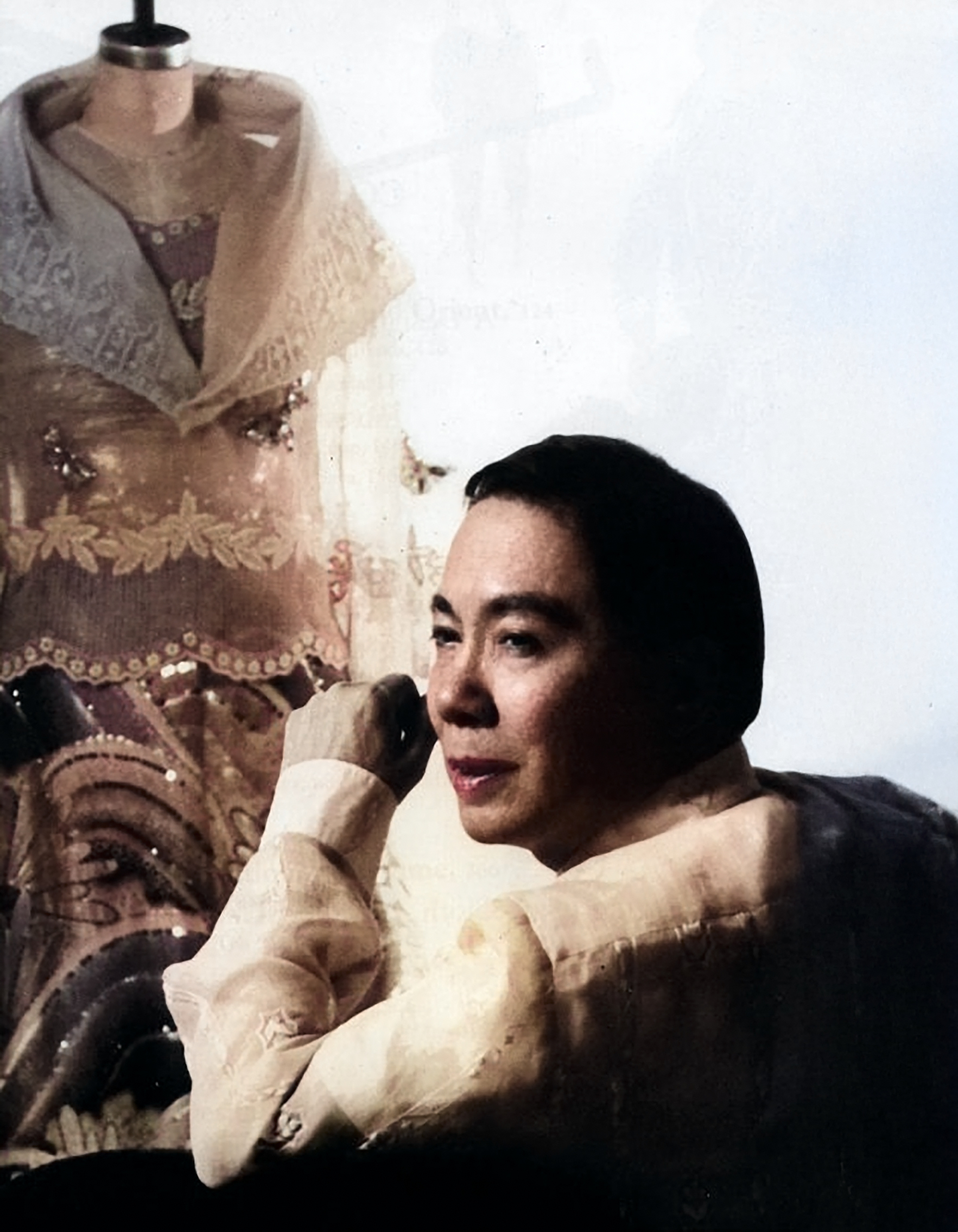
by Jose Carlos G. Campos, Board of Trustees National Museum of the Philippines
My childhood encounter with the famous Pitoy Moreno happened when I was eight years old. My maternal grandmother, Leonila D. Garcia, the former First Lady of the Philippines, and my mother, Linda G. Campos, along with my Dimataga aunts, brought me to his legendary atelier on General Malvar Street in Malate, Manila. These were the unhurried years of the 1970s.
As we approached the atelier, I was enchanted by its fine appointments. The cerulean blue and canary yellow striped canopies shaded tall bay windows draped in fine lace—no signage needed, the designer’s elegance spoke for itself. Inside, we were led to a hallway adorned with Art Deco wooden filigree, and there was Pitoy Moreno himself waiting with open arms—”Kamusta na, Inday and Baby Linda,” as he fondly called Lola and Mommy.
“Ahhh Pitoy, it’s been a while,” Lola spoke with joy.
“Oh eto, may kasal na naman,” my mom teasingly smiled.

Linda Garcia Campos and Pitoy Moreno’s friendship started when they were students in the University of the Philippines in Diliman.
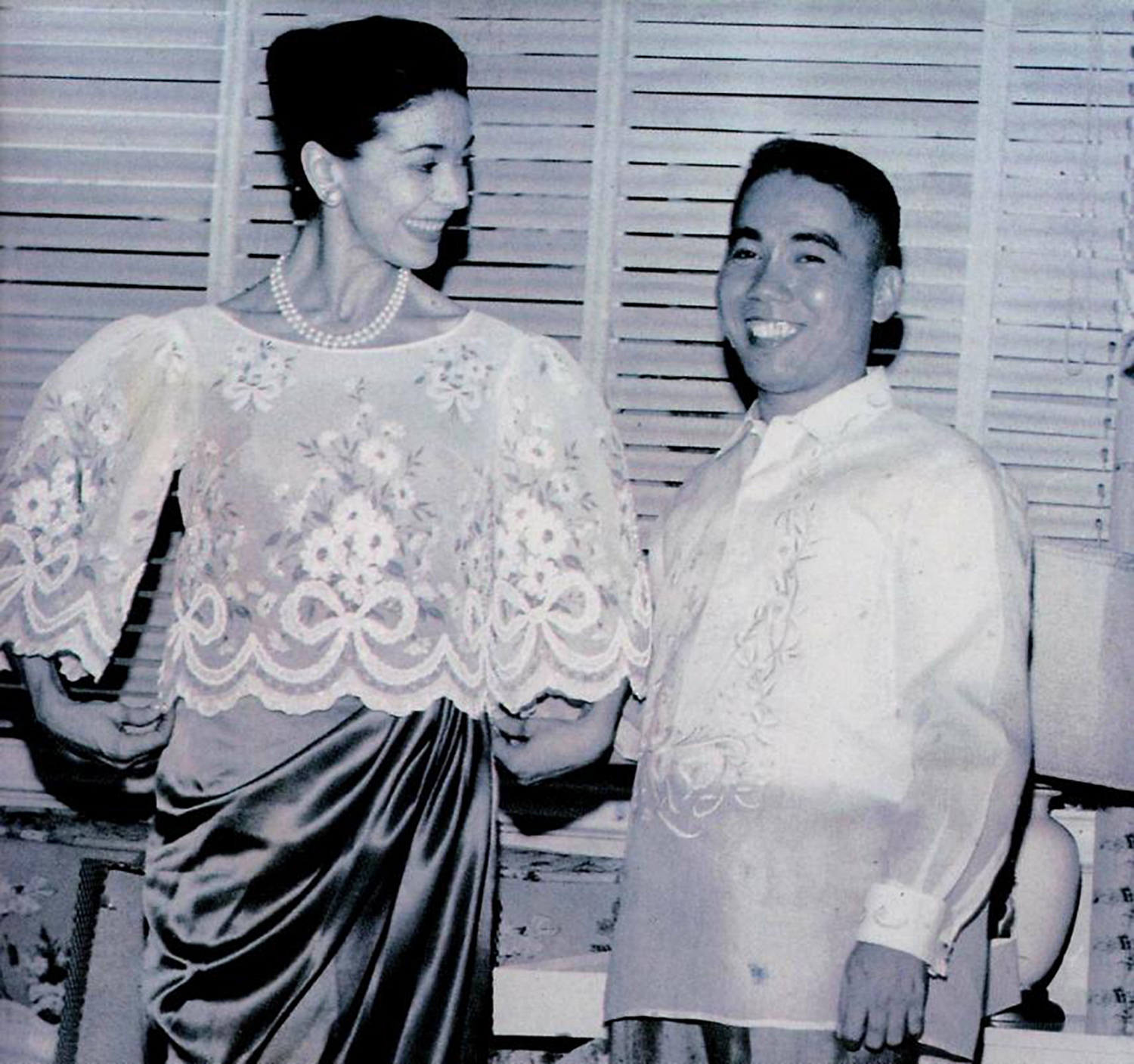
When Dame Margot Fonteyn came for a visit to Manila, Pitoy Moreno dressed her up for an occasion.
We had entered a world of beauty—porcelain figurines, ancient earthenware and pre-colonial relics. It was like stepping into a looking glass, only Pitoy could have imagined.
Destiny led me back years later when my mother Linda told me that Pitoy Moreno was working on his second book, Philippine Costume, and needed research material and editorial advice. At this point, around the 1990s, I was in between assignments—unsure of how a broadcasting graduate like me could possibly contribute to a fashion icon’s masterpiece. Fortunately, I agreed to the project.
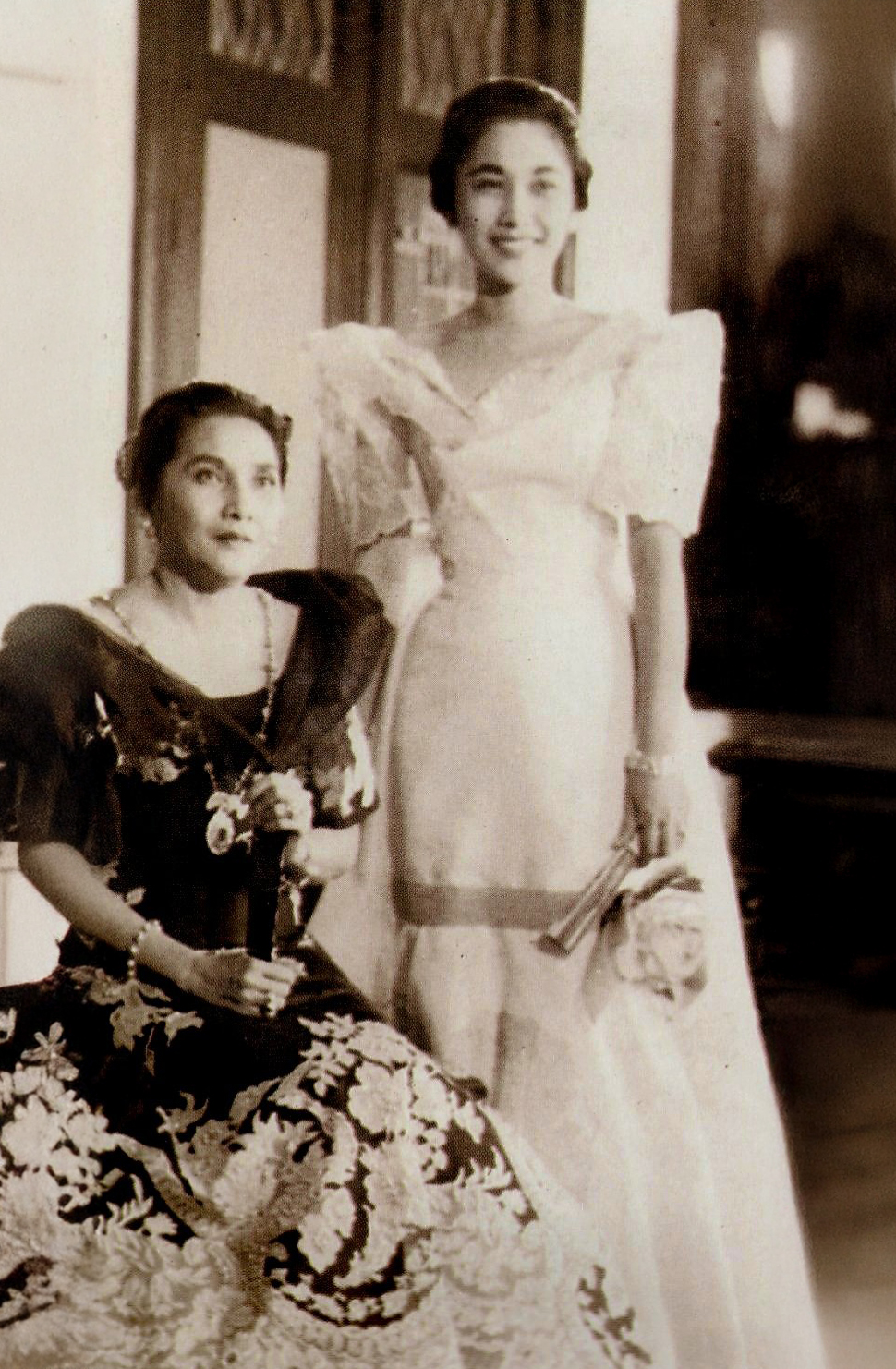
Former First Lady Leonila D. Garcia and daughter Linda G. Campos in Malacañang Palace.
Returning to the designer’s atelier brought back a rush of pleasant memories. The gate opened, and there stood Pitoy Moreno, beaming as always.
“Come in, hijo. Let me show you what I have in mind—and call me Tito Pitoy, okay?”
He led me to his worktable.
“I want to publish a book that tells the story of Philippine fashion—from our pre-colonial roots to the present. A designer’s collection of images and heritage expressed in clothing.”
I was awestruck. “How can I help you?” I inquired.
“Did you know that your mother, Linda, was my barkada in the University of the Philippines in Diliman?” he grinned.
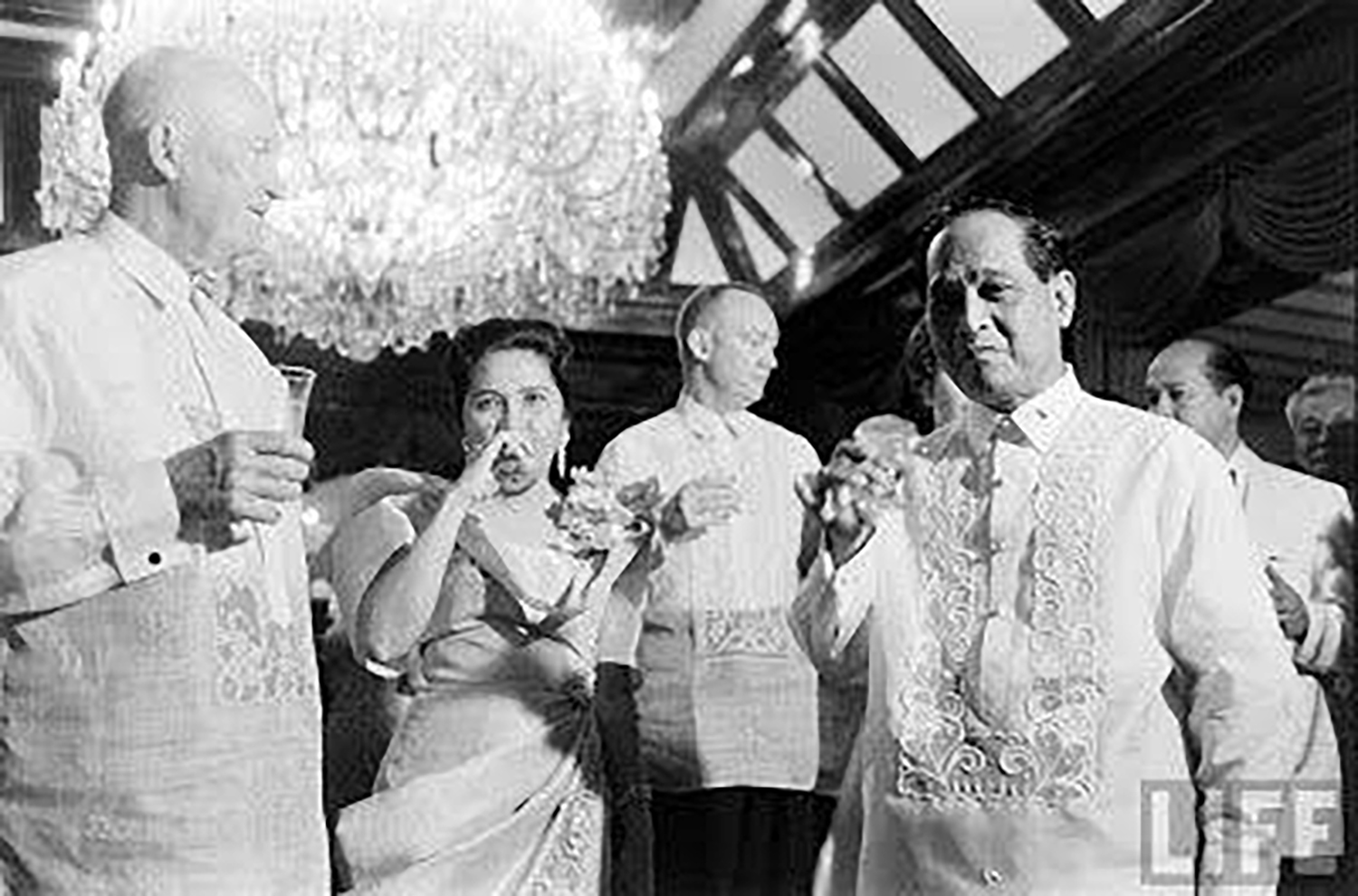
US President Dwight Eisenhower with First Lady Leonila Garcia and President Carlos Garcia in a state dinner at Malacañang Palace in Manila.
That friendship soon led to one of the proudest moments of the designer’s life. He had the opportunity to dress not only the First Lady Leonila D. Garcia but also President Carlos P. Garcia during his term. It was also during this time that the President of the United States, Dwight Eisenhower, came for an official visit to Manila. The designer was able to make clothes for the President, his daughter, and his staff.
“Eisenhower even asked for discounts on the barong Tagalog,” Tito Pitoy laughed.
Tito Pitoy then asked if I could find a terno he had made for my Lola, the former First Lady, which she wore for President Eisenhower’s state visit in 1960.
“How about her other ternos, dated from the 1920s to the 1960s?” I offered.
He lit up.
I scoured my Lola’s extensive closet—it felt like unearthing a legacy. Tucked behind layers of vintage ternos from countless fashion designers, I found that terno, which was photographed by Dick Baldovino along with other pieces for the book project. Once the project was finished and I myself had moved on, my bond with Tito Pitoy never wavered.
When my Lola passed away, he was deeply touched when I personally informed him of the sad news. Once, at the wake of former Vice President Salvador Laurel, he asked me to assist him in the placement of the medals in the chapel.
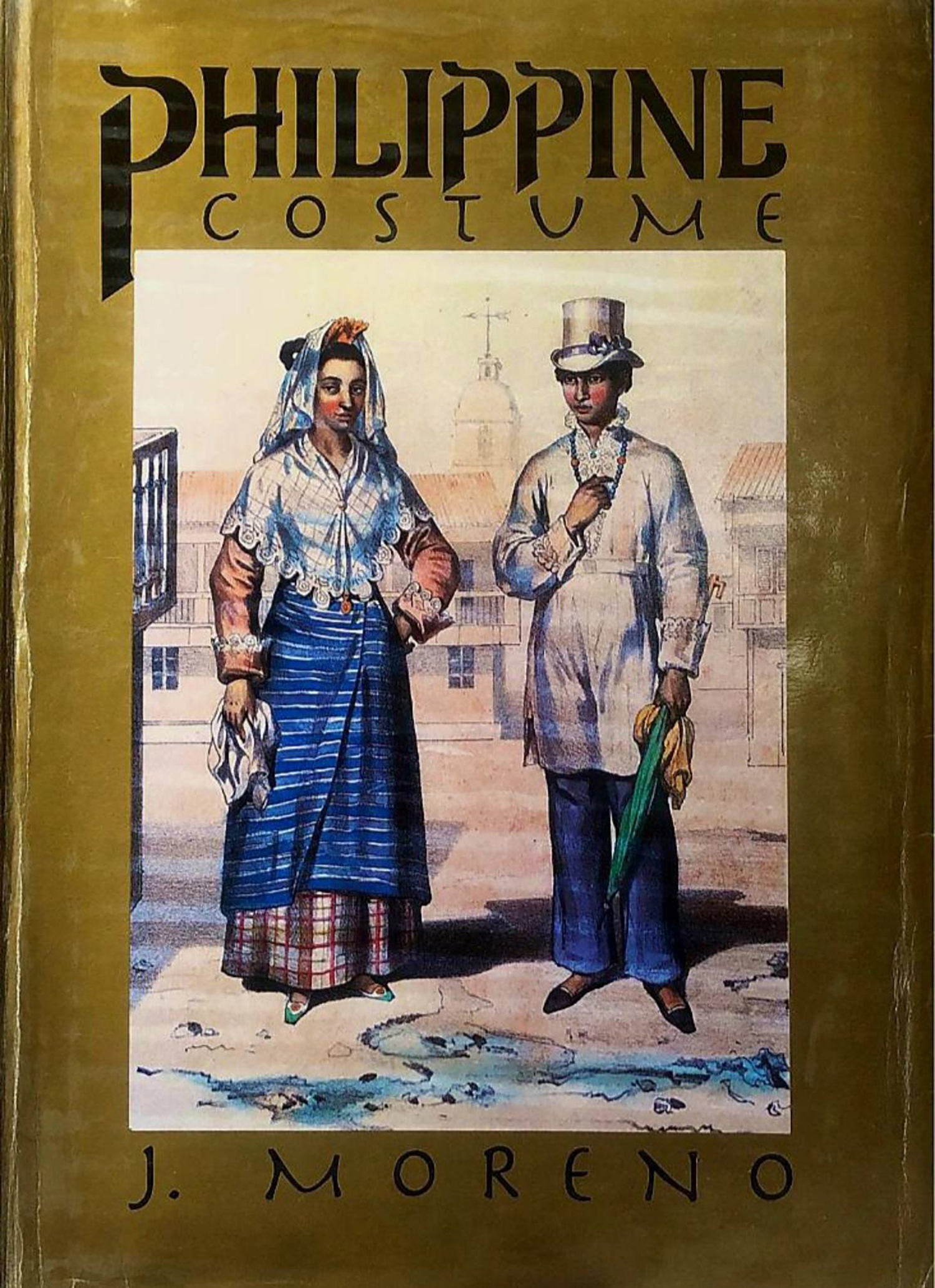
Philippine Costume by Jose Moreno is the designer’s collection of images and heritage expressed in clothing.
Tito Pitoy later invited me to his 80th birthday celebration—a dazzling Manila affair in 2012. During the evening’s festivities, he handed me a printed copy of Philippine Costume and added warmly,
“Thank you, hijo. I’ll call on you for the next one.”
The highlight of his career—and his most unforgettable moment—came during the Metro Magazine Gala fashion show: A Tribute to Pitoy Moreno, Fashion Icon. A collection of evening gowns spanning six decades—many of them unseen and tucked away in his atelier—were revealed that night. When the finale came, Tito Pitoy walked the stage, triumphant and waving to a sea of admirers. Longtime friends from the industry, society’s finest, and fashionistas rose from their seats and gave him a standing ovation.
It wasn’t just to celebrate his craft and ingenuity—it was to honor the man who brought elegance, history, and heart in every stitch.
-

 Style2 months ago
Style2 months agoHappy Melendres Traipsing Around Manhattan in Non-Stop Armani
-

 Arts & Culture3 months ago
Arts & Culture3 months agoKultura. Kapital. Kasalukuyan: Art that Speaks of Today
-
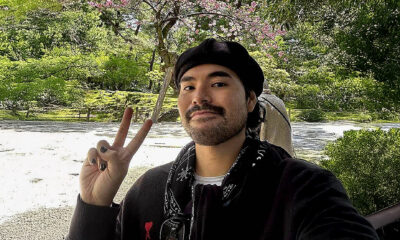
 Prime Target2 months ago
Prime Target2 months agoMiko Sarmiento: Turning Silk Scarves Into Works of Art
-
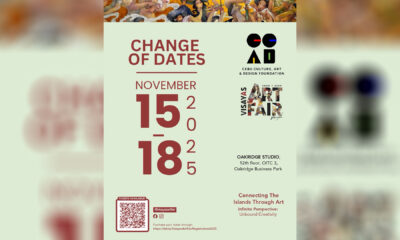
 Arts & Culture1 month ago
Arts & Culture1 month agoVisayas Art Fair Year 5: Infinite Perspectives, Unbound Creativity
-
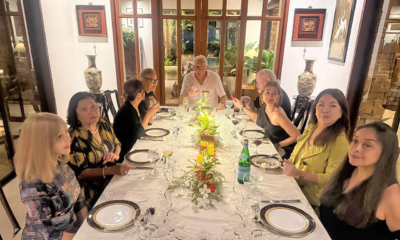
 The Scene3 months ago
The Scene3 months agoAnother Elegant Dinner at Chez Marguerite
-

 Prime Target3 months ago
Prime Target3 months agoLuna Vdl–Endless Summers in Siargao
-

 The Scene3 months ago
The Scene3 months agoA Stylish Soirée: Cebu’s Elite Celebrate Jackie Deen Lotzoff at Mad Thai
-

 QuickFx2 months ago
QuickFx2 months agoI Lost It at the Movies: Five of the Most Significant Films of the 1960s








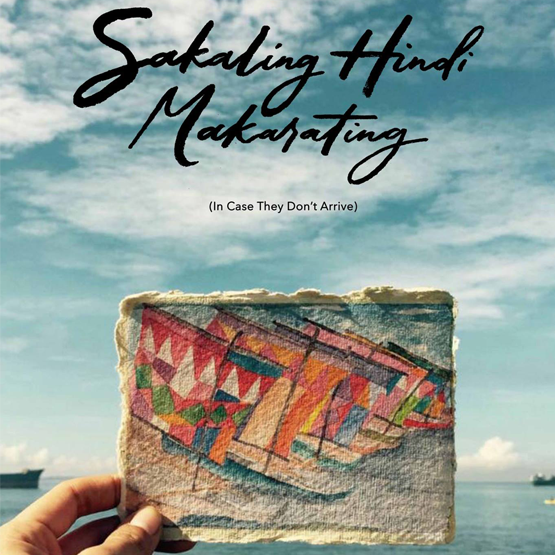




You must be logged in to post a comment Login